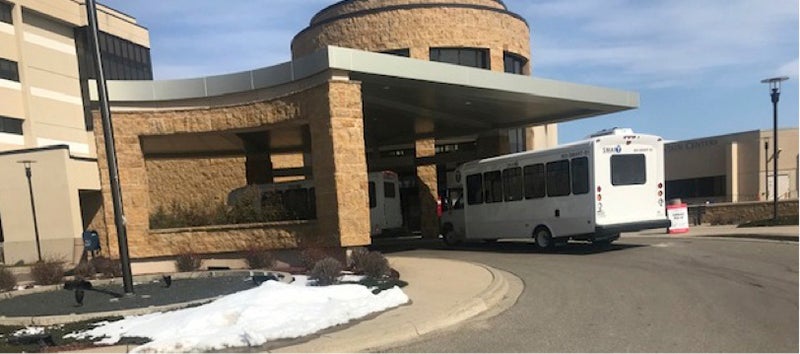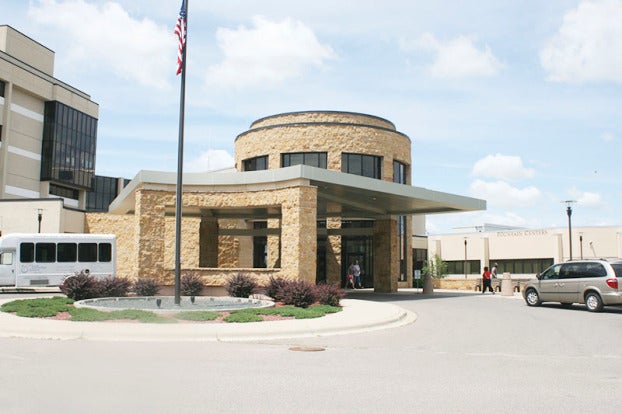Nurses wanted: Swamped hospitals scramble for pandemic help
Published 2:40 pm Wednesday, December 2, 2020
|
Getting your Trinity Audio player ready...
|
OMAHA, Neb. — U.S. hospitals slammed with COVID-19 patients are trying to lure nurses and doctors out of retirement, recruiting students and new graduates who have yet to earn their licenses and offering eye-popping salaries in a desperate bid to ease staffing shortages.
With the virus surging from coast to coast, the number of patients in the hospital with the virus has more than doubled over the past month to a record high of nearly 100,000, pushing medical centers and health care workers to the breaking point.
“Nurses are under immense pressure right now,” said Kendra McMillan, a senior policy adviser for the American Nurses Association. “We’ve heard from nurses on the front lines who say they’ve never experienced the level of burnout we’re seeing right now.”
Governors in hard-hit states like Wisconsin and Nebraska are making it easier for retired nurses to come back, including by waiving licensing requirements and fees, though it can be a tough sell for older nurses, who would be in more danger than many of their colleagues if they contracted the virus.
Some are taking jobs that don’t involve working directly with patients to free up front-line nurses, McMillan said.
Iowa is allowing temporary, emergency licenses for new nurses who have met the state’s educational requirements but haven’t yet taken the state licensing exam. Some Minnesota hospitals are offering winter internships to nursing students to boost their staffs. The internships are typically offered in the summer but were canceled this year because of COVID-19.
Methodist Hospital in Minneapolis will place 25 interns for one to two months to work with COVID-19 patients, though certain tasks will remain off-limits, such as inserting IVs or urinary catheters, said Tina Kvalheim, a nurse who runs the internship program.
“They’ll be fully supported in their roles so that our patients receive the best possible, safe care,” Kvalheim said..
Landon Brown, 21, of Des Moines, Iowa, a senior nursing student at Minnesota State University, Mankato, recently accepted an internship at the Mayo Clinic in Mankato. He was assigned to the pediatric unit’s medical-surgical area but said he might come across patients with the coronavirus.
Brown’s resolve to help patients as a nurse was reaffirmed after his 90-year-old grandfather contracted the virus and died over the weekend.
“The staff that he had were great, and they really took a lot of pressure off of my folks and my family,” he said. “I think that if I can be that for another family, that would be great.”
The University of Iowa’s College of Nursing is also trying to get graduates into the workforce quickly. It worked to fast-track students’ transcripts to the Iowa Board of Nursing so they could get licensed sooner upon graduating, said Anita Nicholson, associate dean for undergraduate programs.
Nicholson said the college also scheduled senior internships earlier than normal and created a program that allows students to gain experience by working at University of Iowa Hospitals and Clinics in Iowa City under a nurse’s supervision. Those students aren’t caring for coronavirus patients, but their work frees up other nurses to treat those who are infected, Nicholson said.
“The sooner we can get our graduates out and into the workforce, the better,” she said.
Hospitals also are turning to contract nurses who often travel from other states. But it’s expensive, because hospitals around the country are competing for the same pool of nurses, driving salaries as high as $6,200 per week, according to posts for travel nursing jobs.
Doctors are in demand, too.
“I don’t even practice anymore, and I’ve gotten lots of emails asking me to travel across the country to work in ERs,” said Dr. Georges Benjamin, executive director of the American Public Health Association. “I know that’s happening to a lot of nurses as well.”
The outbreak in the U.S. is blamed for more than 270,000 deaths and 13.8 million confirmed infections. New cases are running at over 160,000 a day on average, and deaths are up to more than 1,500 a day, a level seen back in May, during the crisis in the New York City area.
To make room for the sickest, hard-hit institutions are sending home some COVID-19 patients who otherwise would have been kept in the hospital. They are also canceling elective surgeries or sending non-COVID-19 adult patients to pediatric hospitals.
A hospital system in Idaho is sending some COVID-19 patients home with iPads, supplemental oxygen, blood pressure cuffs and oxygen monitors so they can finish recovering in their own beds.
The computer tablets enable nurses to check in with them, and the oxygen monitors automatically send back information that staffers watch to make sure the patients are OK. A St. Louis hospital system is doing something similar.
Across the U.S., hospitals are converting cafeterias, waiting rooms, even a parking garage to patient treatment areas. Some states are opening field hospitals.
But that does nothing to ease the staffing shortage, especially in rural areas where officials say many people aren’t taking basic precautions against the virus.
Dr. Eli Perencevich, an epidemiology and internal medicine professor at the University of Iowa, said health care workers are paying the price for other people’s refusal to wear masks.
“It’s sending everyone to war, really,” he said. “We’ve decided as a society that we’re going to take all the people in our health care system and pummel them because we have some insane idea about what freedom really is.”





